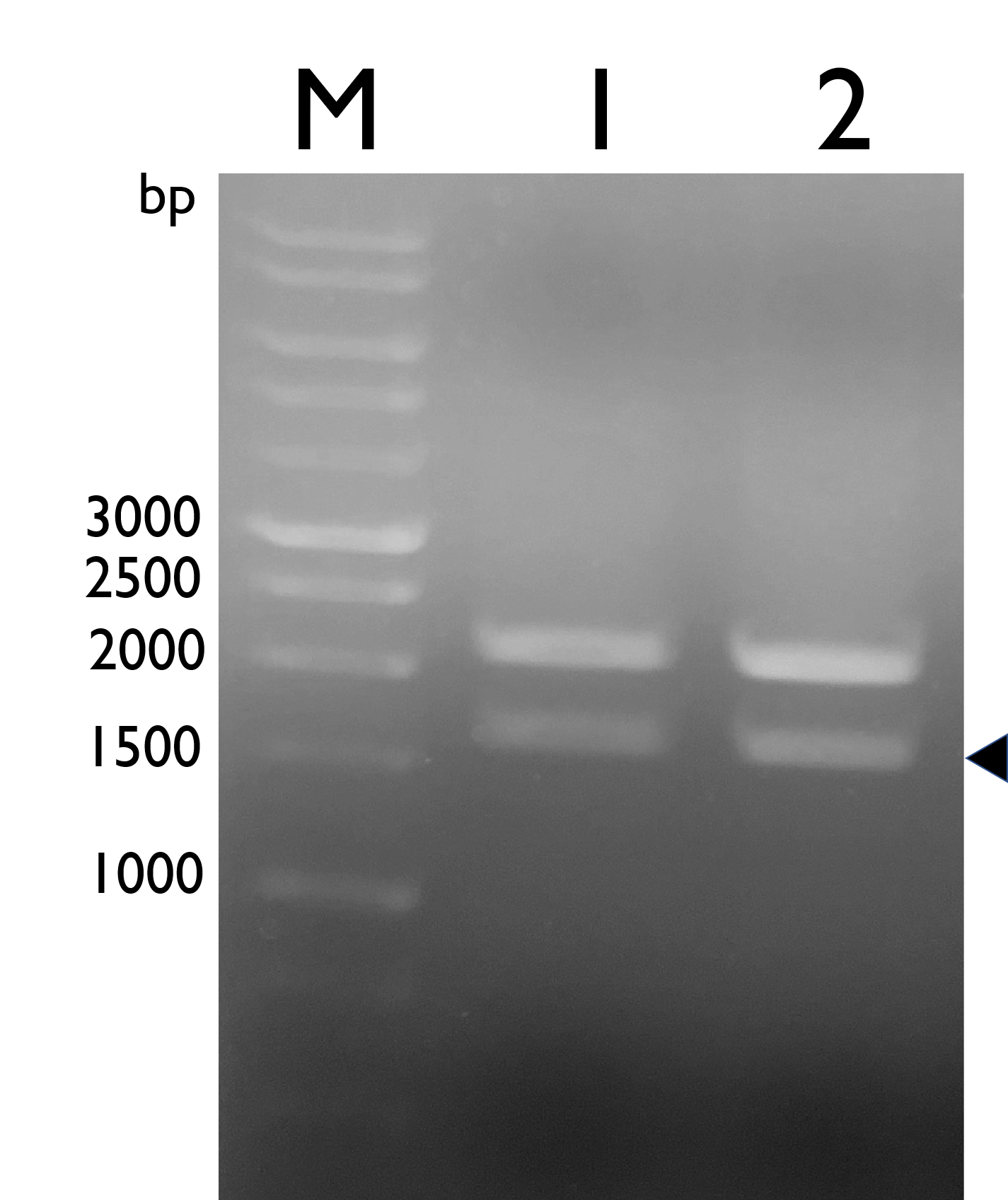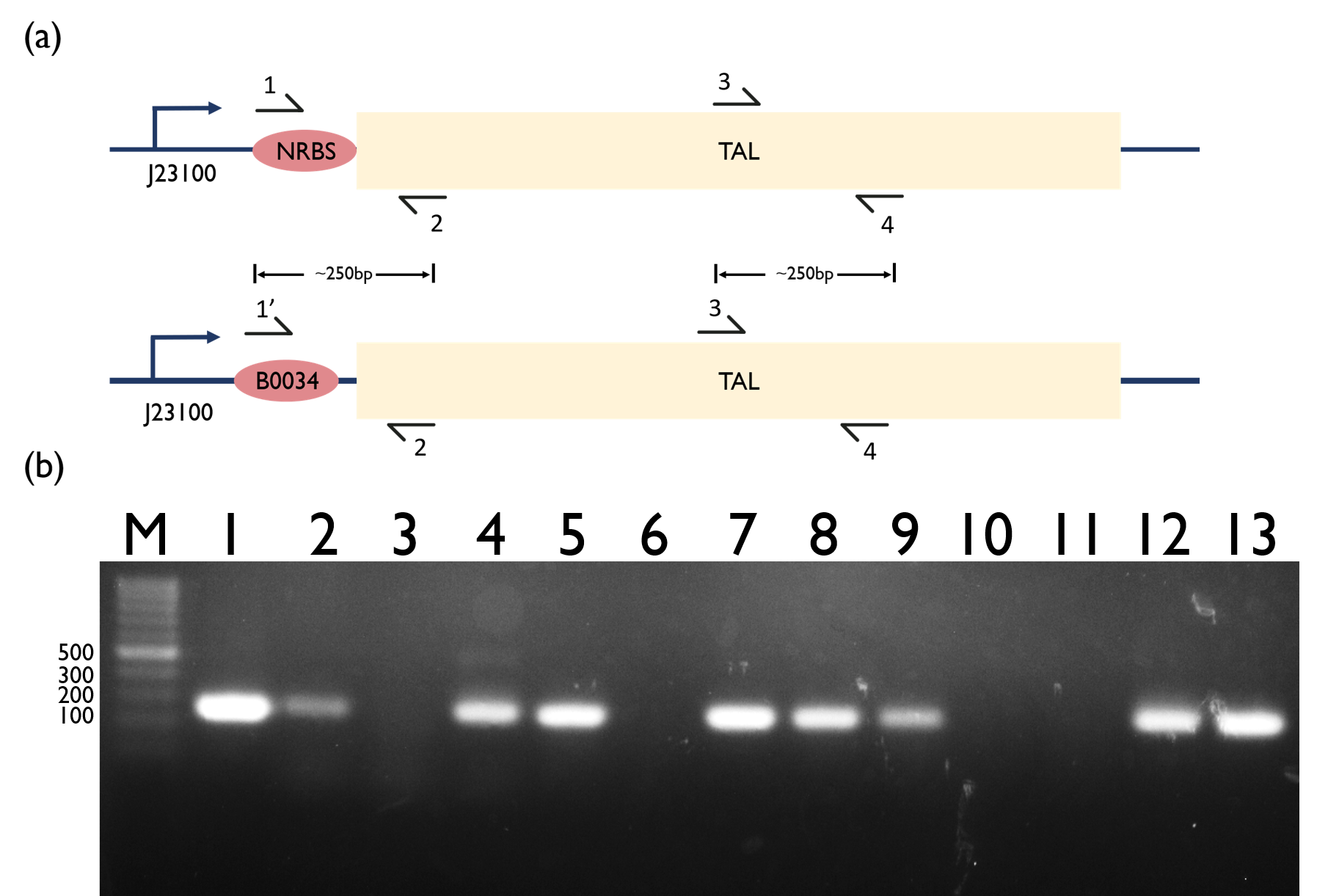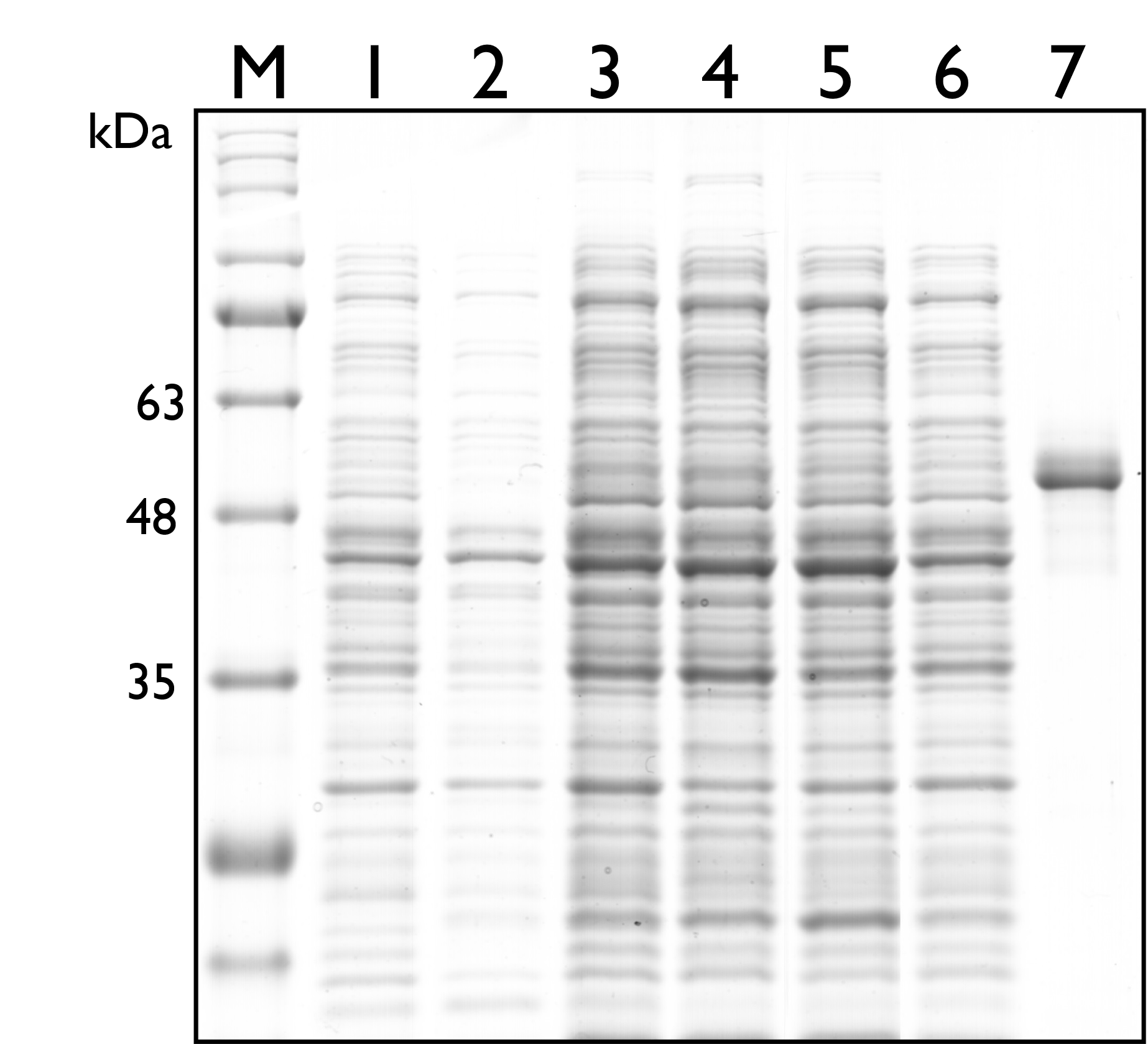Difference between revisions of "Part:BBa K2997009"
(→RT-PCR) |
|||
| Line 16: | Line 16: | ||
</html> | </html> | ||
| − | Fig. | + | Fig. 1. Confirmation of BBa_K2997009 by double digestion, arrow indicates TAL w/ NRBS (~1600bp).M: Marker; Lane 1: pSB1C3-BBa_K2997009; Lane 2: BBa_K2997009 |
===RT-PCR=== | ===RT-PCR=== | ||
| Line 27: | Line 27: | ||
<br> | <br> | ||
</html> | </html> | ||
| − | Fig. | + | Fig. 2. Reverse Transcription(RT)-PCR Results to confirm that our construct is being transcribed. |
(a) Schematics show location of amplified regions and primers. (b) 1.5% Agarose gel shows PCR results. All products have expected size of 250bp as shown in (a). | (a) Schematics show location of amplified regions and primers. (b) 1.5% Agarose gel shows PCR results. All products have expected size of 250bp as shown in (a). | ||
(cDNA: Total cDNA; RNA: Total RNA; plasmid: pSB1C3 containing respective Biobrick.) | (cDNA: Total cDNA; RNA: Total RNA; plasmid: pSB1C3 containing respective Biobrick.) | ||
Revision as of 17:51, 19 October 2019
J23100-NRBS-sam8 (J23100-I742106)
Background
Tyrosine ammonia-lyase (TAL) is an enzyme that converts tyrosine into p-Coumaric acid. We engineered E. coli Nissle to express TAL to turn the excess tyrosine inside the gut into p-Coumaric acid, and compare the different constructs for improvement, BBa_K2997009 and BBa_K2997010.
Expression in E.coli
We constructed Tyrosine Ammonia Lyase with a native RBS , and transformed the plasmid into E. coli Nissle 1917 and confirmed it by double digestion. The results are as follows:

Fig. 1. Confirmation of BBa_K2997009 by double digestion, arrow indicates TAL w/ NRBS (~1600bp).M: Marker; Lane 1: pSB1C3-BBa_K2997009; Lane 2: BBa_K2997009
RT-PCR
RT-PCR experiment was used to confirm that the constructed TAL Biobrick is being transcribed. As seen in Fig.9, cDNA for both bacteria carrying TAL constructs are being detected by PCR. Confirming that the TAL genes is actually being transcribed in E. coli Nissle.

Fig. 2. Reverse Transcription(RT)-PCR Results to confirm that our construct is being transcribed. (a) Schematics show location of amplified regions and primers. (b) 1.5% Agarose gel shows PCR results. All products have expected size of 250bp as shown in (a).
(cDNA: Total cDNA; RNA: Total RNA; plasmid: pSB1C3 containing respective Biobrick.)

Table 1. Description of templates and primers being used in each lane.
Then, we carried out SDS-PAGE to check the protein expression of TAL, and the expected protein size of TAL is 54kDa. As seen in the results below, however, there’s no distinguishable band around both sizes.

Sequence and Features
- 10COMPATIBLE WITH RFC[10]
- 12INCOMPATIBLE WITH RFC[12]Illegal NheI site found at 7
Illegal NheI site found at 30 - 21INCOMPATIBLE WITH RFC[21]Illegal BglII site found at 457
Illegal BamHI site found at 36 - 23COMPATIBLE WITH RFC[23]
- 25COMPATIBLE WITH RFC[25]
- 1000INCOMPATIBLE WITH RFC[1000]Illegal SapI.rc site found at 232
